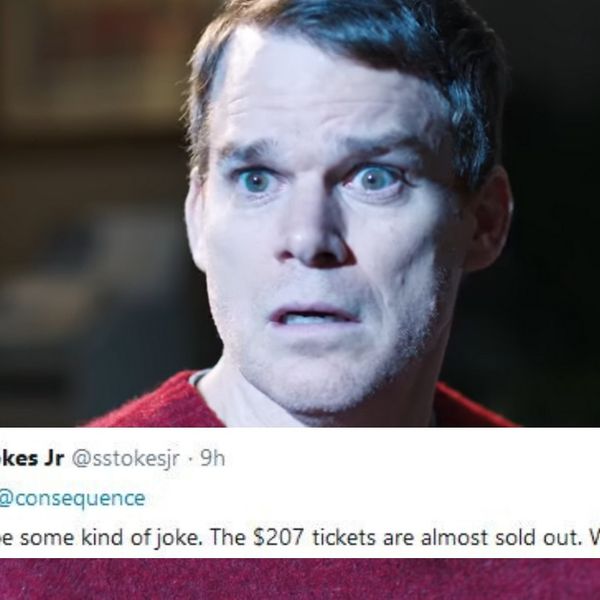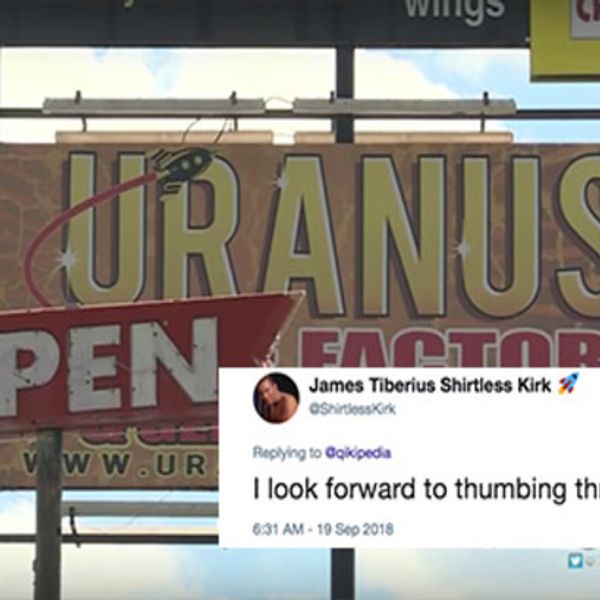November, 2002, LOS ANGELES - There is a warm and gracious Japanese custom called "omiyage." It could translate as both "gift giving" and "memento offering." When one is a guest, it is, of course, appropriate to take a gift to your host. "Omiyage" can also be a special memento of a wonderful place that one has visited which is given to a friend back home. I had an unforgettable two-week visit to Japan in October and the memories of that experience I would like to make my "omiyage" to the readers of this column.
 The Japanese American National Museum has had one of its exhibits touring the southern parts of Japan for the past two years. In October, the exhibit opened in the northern prefecture of Niigata. I participated in the opening ceremony as the chairman of the museum. One of the wonderful "omiyage" that I've come to look forward to on these occasions is the gathering of Japanese Star Trek fans that I've met on previous exhibit opening trips, as well as at many Star Trek conventions in the U.S. As I looked over a sea of formally dressed guests gathered for the ribbon-cutting opening, I could recognize many familiar faces of fans that have now become friends. Instead of Starfleet uniforms, they were in suitable 21st century business attire. Their loyal support and friendship have been one of the many "omiyage" that I consider among my blessings. They even gave me an elegant "omiyage" of lacquer sake cups.
The Japanese American National Museum has had one of its exhibits touring the southern parts of Japan for the past two years. In October, the exhibit opened in the northern prefecture of Niigata. I participated in the opening ceremony as the chairman of the museum. One of the wonderful "omiyage" that I've come to look forward to on these occasions is the gathering of Japanese Star Trek fans that I've met on previous exhibit opening trips, as well as at many Star Trek conventions in the U.S. As I looked over a sea of formally dressed guests gathered for the ribbon-cutting opening, I could recognize many familiar faces of fans that have now become friends. Instead of Starfleet uniforms, they were in suitable 21st century business attire. Their loyal support and friendship have been one of the many "omiyage" that I consider among my blessings. They even gave me an elegant "omiyage" of lacquer sake cups.
Niigata is the snow country of Japan, just north of Nagano, where the last Winter Olympics were held. When I visited, it was early autumn, and the weather was ideal. The Niigata museum is only two years old and the building is an impressive modern structure on a hilltop overlooking a vast expanse of rice paddies. The area is celebrated for producing the best rice in Japan - and fine rice and good water means top-quality sake. The sake of Niigata is renowned. My Star Trek friends gave me another unique "omiyage" - a tour of one of the major sake breweries of Japan called Yoshi-no-gawa. I realized then that my gift sake cups were intended, not to be just decorative, but to be used as well. We viewed the entire process of producing the famed libation of Japan. The part of the tour that we were most eagerly anticipating - the tasting of the sake - came at the very end of the tour. We tasted about a dozen different types of sake - sweet, strong, mild, fruity. To me, they were all superb. In a high state of predisposition, we were ushered into the brewery's shop. I came home with an "omiyage" for myself - sake in a gold, gourd-shaped flask. It is a handsome memento of that visit gracing the sideboard in my dining room. But I have yet to savor its content.
Before moving to Niigata, our exhibit had enjoyed a successful run in Hiroshima. That success was, in large part, due to the wholehearted support of Hiroshima Governor Yuzan Fujita. I needed to call on the governor to express our museum's appreciation for his invaluable assistance. I also wanted to visit an elderly aunt I have in Hiroshima. But Hiroshima was practically at the southernmost end of Japan. Even on the super-speed Bullet train, it would have been a grueling eight-hour ride. I decided to treat myself to historic places in Japan that I had not visited as I worked my way south.
 The first stop was the old castle town of Kanazawa. It is one of the few cities that had not been touched by war. History was richly intact here. Kanazawa Castle, an impregnable fortress with deep moats and heavy defense towers, was under heavy siege when I visited - this time by modern day tourists. The battle seemed to have been lost to the invading horde. Kenroku-en Garden, one of the three garden treasures of Japan was transportingly beautiful. Until 1871, this oasis of lakes, waterfalls, and forest teahouses, was a private sanctuary exclusively for feudal lords and their clan. Even samurai could not be admitted. We arrived early in the morning to enjoy the serenity of the garden as the lords did. But by the time we were ready to leave, the morning calm was being shattered by the megaphoned voices of banner-bearing tour guides describing the "tranquil loveliness" of the garden to herds of gawking, photo-taking tourists. The residential district of the samurai and the geisha quarters were carefully restored as they originally were. It was like walking onto the set of a samurai epic. Except for the incredible hordes of tourists, Kanazawa was like beaming back in time.
The first stop was the old castle town of Kanazawa. It is one of the few cities that had not been touched by war. History was richly intact here. Kanazawa Castle, an impregnable fortress with deep moats and heavy defense towers, was under heavy siege when I visited - this time by modern day tourists. The battle seemed to have been lost to the invading horde. Kenroku-en Garden, one of the three garden treasures of Japan was transportingly beautiful. Until 1871, this oasis of lakes, waterfalls, and forest teahouses, was a private sanctuary exclusively for feudal lords and their clan. Even samurai could not be admitted. We arrived early in the morning to enjoy the serenity of the garden as the lords did. But by the time we were ready to leave, the morning calm was being shattered by the megaphoned voices of banner-bearing tour guides describing the "tranquil loveliness" of the garden to herds of gawking, photo-taking tourists. The residential district of the samurai and the geisha quarters were carefully restored as they originally were. It was like walking onto the set of a samurai epic. Except for the incredible hordes of tourists, Kanazawa was like beaming back in time.
 We continued our trek back in time with our next stop, Nara. This was the ancient imperial capital even before Kyoto, which, in turn, preceded Tokyo. What serendipity! We arrived when the great Todai-ji Temple, reputed to be the largest and oldest wooden structure in the world, was celebrating its 1,250th anniversary. Within this ancient temple is the giant bronze Buddha, another of Japan's great, historic objects. Alas, the momentous ceremony was by invitation only. But again, serendipity! Mr. Ito, the manager of the ryokan - the inn where we were staying -- had connections. He was able to get us invitations to the celebration in the great court of the temple. There we were. Seated in the blazing sun in our dress shirts to witness a rite that could happen only once in 1,250 years. A giant ritual drum the size of a house was in front of us. Beside it stood the priestly drummer in a voluminous, brocaded robe. Alongside the drum was a row of television news cameras. Craning our necks, we could barely see the headdresses worn by the priests and officiants as they paraded by. But at least we had seats. There were people standing in every available space. Sweat began trickling down my forehead. Then, I heard a gruff voice behind me roar in Japanese, "TV cameramen, get out! Get out of here!" At a sacred observance never to happen again, nerves were getting frayed. The angry voice kept up his bellowing until a few of the cameramen reluctantly packed up and left. The ceremony was a great spectacle. There were hundreds of elaborately bedecked officiants, hundreds of ritual performers and scores of costumed children in the historic great court. It was rich pageantry combined with technology and bad manners. I wondered what future ceremonies commemorating the 2,000th anniversary of the great Todai-ji Temple might be like.
We continued our trek back in time with our next stop, Nara. This was the ancient imperial capital even before Kyoto, which, in turn, preceded Tokyo. What serendipity! We arrived when the great Todai-ji Temple, reputed to be the largest and oldest wooden structure in the world, was celebrating its 1,250th anniversary. Within this ancient temple is the giant bronze Buddha, another of Japan's great, historic objects. Alas, the momentous ceremony was by invitation only. But again, serendipity! Mr. Ito, the manager of the ryokan - the inn where we were staying -- had connections. He was able to get us invitations to the celebration in the great court of the temple. There we were. Seated in the blazing sun in our dress shirts to witness a rite that could happen only once in 1,250 years. A giant ritual drum the size of a house was in front of us. Beside it stood the priestly drummer in a voluminous, brocaded robe. Alongside the drum was a row of television news cameras. Craning our necks, we could barely see the headdresses worn by the priests and officiants as they paraded by. But at least we had seats. There were people standing in every available space. Sweat began trickling down my forehead. Then, I heard a gruff voice behind me roar in Japanese, "TV cameramen, get out! Get out of here!" At a sacred observance never to happen again, nerves were getting frayed. The angry voice kept up his bellowing until a few of the cameramen reluctantly packed up and left. The ceremony was a great spectacle. There were hundreds of elaborately bedecked officiants, hundreds of ritual performers and scores of costumed children in the historic great court. It was rich pageantry combined with technology and bad manners. I wondered what future ceremonies commemorating the 2,000th anniversary of the great Todai-ji Temple might be like.
 Mr. Ito, the innkeeper, arranged another unforgettable experience for me - a rickshaw ride through old Nara village. The narrow alleyways and ancient buildings were charming. But the most amazing part of the experience was our young rickshaw man, Nao-san. He had the strength of a horse and the physical control of a precision stockcar. Going downhill with a load of two grown adults, Nao-san's powerful legs became our brakes. Going uphill, his whole physique became the accelerator and engine. As he huffed and puffed, he pointed out landmarks in charmingly academic English. "It is said that this quaint structure - as it were - was once the rice storage of the feudal lords," he huffed between puffs. And through it all, he maintained an enthusiastic smile. We stopped for a sip of sake at, what Nao-san called, "one of the oldest and my favorite sake places in ancient Nara." As I sipped my sake, I noticed that he was drinking water. I'm sure he sipped sake when he came back to collect his commission for bringing us there. He was amazing. Nao-san was a powerful athlete, a delightful linguist, and a wonderful tour guide with a good touch of marketing. I asked him what his goal in life might be. I suspected him to be an athletic college student studying foreign affairs, history, or business administration. Nao-san answered, "to make you happy is my goal." He most certainly accomplished that. Nara, for me, will be a place with a richly glorious past with a future personified by the energy, enthusiasm, and savvy of a young rickshaw man.
Mr. Ito, the innkeeper, arranged another unforgettable experience for me - a rickshaw ride through old Nara village. The narrow alleyways and ancient buildings were charming. But the most amazing part of the experience was our young rickshaw man, Nao-san. He had the strength of a horse and the physical control of a precision stockcar. Going downhill with a load of two grown adults, Nao-san's powerful legs became our brakes. Going uphill, his whole physique became the accelerator and engine. As he huffed and puffed, he pointed out landmarks in charmingly academic English. "It is said that this quaint structure - as it were - was once the rice storage of the feudal lords," he huffed between puffs. And through it all, he maintained an enthusiastic smile. We stopped for a sip of sake at, what Nao-san called, "one of the oldest and my favorite sake places in ancient Nara." As I sipped my sake, I noticed that he was drinking water. I'm sure he sipped sake when he came back to collect his commission for bringing us there. He was amazing. Nao-san was a powerful athlete, a delightful linguist, and a wonderful tour guide with a good touch of marketing. I asked him what his goal in life might be. I suspected him to be an athletic college student studying foreign affairs, history, or business administration. Nao-san answered, "to make you happy is my goal." He most certainly accomplished that. Nara, for me, will be a place with a richly glorious past with a future personified by the energy, enthusiasm, and savvy of a young rickshaw man.
Another Bullet train ride and we were in Hiroshima. This is a place with a more recent significance in history. In the center of the city is a vast open park embraced by two rivers. Named Peace Park, it commemorates the dropping of the world's first atomic bomb. Alongside the river is the ruins of the building that was at the epicenter of the blast. The skeletal dome of the structure is to remain forever as a reminder of the devastating horrors of war. Today, the city of Hiroshima is a dynamic, modern metropolis with sleek high-rises soaring into the skyline. Its governor, Yuzan Fujita, is a young, vigorous leader who had lived in New York for a time as a banker. My meeting to thank him for his invaluable support for our museum exhibit there, however, was conducted all in Japanese. The Japanese American National Museum's hope is to build on the relationship that had been established by the visit of our exhibit there earlier this year. It wasn't until the formal conversation was concluded that he broke into English - the rascal. I had another reason for going to Hiroshima. My aunt, my mother's younger sister, is there, now in a rest home. She suffers from Parkinson's Disease but her mind is lively and she is as chatty as she has ever been. I passed on to her a Mexican necklace that my mother had treasured. She immediately launched into an anecdote of the time she was in Mexico.
On our way back to Tokyo, we stopped off in Nagoya to visit a national park with a collection of buildings from the Meiji period appropriately called Meiji village. The Meiji period of Japan, the time of the reign of Emperor Meiji, was almost parallel to that of the reign of Queen Victoria of Britain. The park is studded with, what we might call, structures in the Victorian style. The Meiji era was a time when Japan was eagerly importing ideas and technology from the West. I was particularly interested in this visit because a portion of the original Imperial Hotel, designed by iconic architect, Frank Lloyd Wright, had been moved there from Tokyo. It was classic Wright, bold, horizontal, and reminiscent of the Biltmore Hotel in Phoenix, Arizona, which Wright had also designed. The coffee shop was still operating. So, we enjoyed a refreshing pause in our tour of Meiji period railway stations, residences and even a kabuki theater.
 The great joy of our much too brief stop in Nagoya, was meeting a young American named Matthew Rossi. He had been interested in Japanese culture as a teenager in Florida. He first came to Japan as a student with the JET program to teach English. He returned to the U.S. a born-again Japanese. He came back to Japan, this time to live with a Japanese family in a small mountain village where he was the only foreigner. He ate, slept, and lived the life of a rural Japanese with every pore of his being absorbing in the culture. After that singular experience, he studied and worked in Nagoya and had become, for all rights and purposes, culturally Japanese. But his personality and spirit remain vibrantly American. And Matthew just happened to be the Vice President of the Kanko Hotel where we stayed. He also happened to be a Star Trek fan. When my reservation was made, he enthusiastically offered to serve as our personal guide to Meiji village. What an extraordinary treat that was! He took a half-day out of his office to be our guide. To have an enthusiastic American who, at the same time, was so thoroughly and proudly Japanese, show us a part of Japan's history was an experience we can never forget. I pledged to him that I would return to Nagoya. He gave me a tantalizing bait. He told me that he was opening a trendy new restaurant called Morgan and Rossi in the hip part of Nagoya. He even pointed out the building he and his partner, Morgan, had selected for their new enterprise. It was a wonderful old Meiji period building right alongside a canal. Nagoya, and Morgan and Rossi are definitely on my agenda for a return to Japan.
The great joy of our much too brief stop in Nagoya, was meeting a young American named Matthew Rossi. He had been interested in Japanese culture as a teenager in Florida. He first came to Japan as a student with the JET program to teach English. He returned to the U.S. a born-again Japanese. He came back to Japan, this time to live with a Japanese family in a small mountain village where he was the only foreigner. He ate, slept, and lived the life of a rural Japanese with every pore of his being absorbing in the culture. After that singular experience, he studied and worked in Nagoya and had become, for all rights and purposes, culturally Japanese. But his personality and spirit remain vibrantly American. And Matthew just happened to be the Vice President of the Kanko Hotel where we stayed. He also happened to be a Star Trek fan. When my reservation was made, he enthusiastically offered to serve as our personal guide to Meiji village. What an extraordinary treat that was! He took a half-day out of his office to be our guide. To have an enthusiastic American who, at the same time, was so thoroughly and proudly Japanese, show us a part of Japan's history was an experience we can never forget. I pledged to him that I would return to Nagoya. He gave me a tantalizing bait. He told me that he was opening a trendy new restaurant called Morgan and Rossi in the hip part of Nagoya. He even pointed out the building he and his partner, Morgan, had selected for their new enterprise. It was a wonderful old Meiji period building right alongside a canal. Nagoya, and Morgan and Rossi are definitely on my agenda for a return to Japan.
All too soon, our two weeks in Japan were coming to an end. Our last hurrah was Tokyo, the highlight of which was a day at the kabuki - yes, literally, a day at the kabuki theater with intermission breaks for sushi. The performance began at 11 a.m. and finished at 9:30 p.m. The play was the classic revenge drama "Chushingura" or "The 47 Masterless Samurai." It was electrifying theater. There were elaborately brocaded costumes, sets on turntables to reveal both the exterior and interior, and dramatic musical accompaniment with sonorous big drums and high-pitched clackers. The final assault of the 47 samurai on the palace of the evil lord took place in a driving snowstorm. The choreography of the mass sword fights was spectacularly athletic. It was, at once, exhausting and exhilarating - which is a good summation of the entire two weeks in Japan. We came home with glowing "omiyage" memories in our hearts.
 On the day of my return, I was greeted by tragic news. A very dear friend, Beulah Quo, had suddenly died that very afternoon. The news was like a jolt of electric current. I had talked with Beulah on the phone the day before I left for Japan. We had made plans to get together for lunch on my return. The shock and pain of loss was unbearable.
On the day of my return, I was greeted by tragic news. A very dear friend, Beulah Quo, had suddenly died that very afternoon. The news was like a jolt of electric current. I had talked with Beulah on the phone the day before I left for Japan. We had made plans to get together for lunch on my return. The shock and pain of loss was unbearable.
Beulah Quo was a fine actress with whom I had acted on many shows. I first worked with her on an episode of the television series "My Three Sons" back in 1963 and we had become good friends. We worked in partnership on the KNBC public affairs show "Expressions: East West" from 1971 to 1973. She served as the producer and I was the moderator. We collaborated on many civic and community projects together. We were co-chairs of the fundraising campaign to move the oldest Asian American theater company in the nation, the East West Players, from a 99-seat theater into a 240-seat house. Beulah had boundless energy and a passionate dedication to the ideals and causes we shared. Most of all, she was a caring friend. If I should get sick, Beulah was there with hot soup and healing Chinese potions. She gave me so much. She inspired so many. She achieved so much. Beulah was a gifted, Emmy award-winning performer, but more than that, she was an actor in the fullest sense of the word - a person who takes action. Beulah Quo leaves a rich legacy of accomplishments, her life "omiyage" to the community she served so well. Thank you, Beulah, for having shared your extraordinary life with us.
High School Administration Under Fire For Breaking Into A Bathroom Stall While Transgender Student Was Using It
Cece is a 16-year-old transgender girl from Maple Grove, Minnesota.
She is a student at Osseo Senior High School and recently had a traumatic experience at school.
On Wednesday, Cece posted two videos, one of which is very disturbing, to her Facebook regarding an incident she experienced.
While Cece was using the bathroom at school, staff forced their way into the stall she was in.
Again, Cece is 16 years old.
Her post reads:
"SCHOOL OSSEO SEINOR HIGH 🚨
I Guess I Can't Use The Girls Bathroom Just Because I'm Transgender 😔 Share This & MAKE IT GO VIRAL ‼️ I Been Violating By Principal and Admin and Hallmonters
This Was Today 11/28/18 🕚 Ms Smith Had Nothing To Do With This"
One video showed all of the school officials she wanted to publicly name who participated in the incident.
The other showed the actual incident.
Cece's self-recorded video shows her sitting on the toilet with her pants down while a school official uses a makeshift device to reach over the stall to unlock the door.
A spokesperson for Osseo Schools stated:
"Social media posts are significantly misrepresenting the incident and that staff works very hard every day to help ensure an inclusive school where all students feel welcome, respected and safe."
They refused to comment further saying:
"We wish we could provide additional details about this incident but are committed to protecting the student's right to data privacy."
Some reports claim that Cece had previously been told not to use the women's restroom.
However, in 2017 the Minnesota Department of Education (MDOE) ruled in favor of students like Cece.
MDOE guidance states:
"Transgender and gender nonconforming students should be afforded the opportunity to use the restroom of their choice."
People also can not help but note the fact that at age 16, Cece is a minor.
Adults forcing themselves into her stall while she used the bathroom is even more appalling.

Look, guys, when a kid is in the bathroom stall with their pants down, and you pry open the stall, exposing them to… https://t.co/rzMktZEkEB— Thomas Page (@Thomas Page) 1543690840
This should be sexual assault assault of a minor. Anyone involved should IMMEDIATELY be relieved from their positio… https://t.co/M5ByUSBvBP— CrystalshineMarie (@CrystalshineMarie) 1543626160
Regardless of the unknown circumstances, the internet is outraged over the adult school staff's actions.
1st thing I saw this AM & now I can’t stop thinking about it. Unless she was assaulting another student, there is… https://t.co/nkeudm8mAN— BadAssGrandma (@BadAssGrandma) 1543679009
Transphobic adults literally busted the bathroom door open on a trans high school student today in Minnesota bc the… https://t.co/rojArsFW9Q— mother sister (@mother sister) 1543465561
Look at the face of the woman who has unlocked the bathroom door!Arrogant assholes https://t.co/X98JSgHgMx— Teresa Culhane (@Teresa Culhane) 1543698568
Cece's video and story has indeed gone viral. But what happens now remains to be seen.
H/T: Pink News, Facebook, Daily Dot, Bring Me The News
We all love a good meme, and the best memes often imitate life. Model Kendall Jenner is the latest target of the Instagram account @itsmaysmemes, which photoshops celebrities in hilariously oversized outerwear.
At least it looks cozy...
Soon, Vogue France tweeted the image and all hell broke loose.
Winter is coming ! https://t.co/obJe6bO87B— Vogue.fr (@Vogue.fr) 1540199684.0
The caption reads:
"Winter is coming !"
Indeed.
People made their own versions.
@VogueParis @KendallJenner oh okay... https://t.co/Willu5LSlN— ًleah (@ًleah) 1540383130.0
@VogueParis @KendallJenner Fixed it! https://t.co/ThTnfVSfvk— sleepy jorge (@sleepy jorge) 1540480172.0
@VogueParis @KendallJenner https://t.co/p5CTJDEiqJ— Ty ©️ (@Ty ©️) 1540502215.0
Some compared it to other strange fashion choices we've seen over the years.
@VogueParis @KendallJenner https://t.co/hnLvEvRJAB— Bouzid Van Der Woodsen (@Bouzid Van Der Woodsen) 1540230561.0
@VogueParis @KendallJenner New couple with @LennyKravitz?? https://t.co/oCS3WAi3Xd— がんばれ! (@がんばれ!) 1540248515.0
@VogueParis @KendallJenner https://t.co/zAB6xKmu8T— TheBowLegg’dOne (@TheBowLegg’dOne) 1540471862.0
And there were those who had some pretty interesting ideas about what this looked like.
How your girl looks when she says she's cold and you give her your coat https://t.co/louipQI66k— Jack Skellington (@Jack Skellington) 1540405914.0
This is what P.E. teachers would be wearing during winter while shouting at students to stop complaining that it’s… https://t.co/5qDubio0mX— اليشبا (@اليشبا) 1540392391.0
Perhaps we loved it because it did seem just avant garde enough for Jenner to actually wear. Turns out we all can! Well, sort of. The jacket is a digitally enlarged version of The Super Puff jacket at Aritzia. Even the non-Photoshopped version looks pretty cozy!
H/T: Huffington Post, Twitter
George R.R. Martin Just Confirmed A Popular 'Game Of Thrones' Fan Theory About White Walkers
Game of Thrones scribe George R.R. Martin is promoting his new book in the A Song of Ice and Fire series, and provided insight into a group of characters fans have been waiting to learn more about.
As an author known to inject symbolism into the fantastical worlds he creates, Martin revealed that the icy group of White Walkers from Game of Thrones personified climate change.
What the ancient humanoid race of icy creatures stand for is a concept many have theorized all along.
Now fans received confirmation from the author himself.
Martin may have prognosticated climate change while he was writing GoT. The cold that transcends upon Westeros sounds eerily familiar.
"It's kind of ironic," Martin told the New York Times.
"Because I started writing 'Game of Thrones' all the way back in 1991, long before anybody was talking about climate change."
"But there is — in a very broad sense — there's a certain parallel there. And the people in Westeros are fighting their individual battles over power and status and wealth."
He added:
"And those are so distracting them that they're ignoring the threat of 'winter is coming,' which has the potential to destroy all of them and to destroy their world."
"And there is a great parallel there to, I think, what I see this planet doing here, where we're fighting our own battles. We're fighting over issues, important issues, mind you — foreign policy, domestic policy, civil rights, social responsibility, social justice. All of these things are important."
Martin continued:
"But while we're tearing ourselves apart over this and expending so much energy, there exists this threat of climate change, which, to my mind, is conclusively proved by most of the data and 99.9 percent of the scientific community. And it really has the potential to destroy our world."
"And we're ignoring that while we worry about the next election and issues that people are concerned about, like jobs."
Marten stressed the importance of caring for the environment, adding that protecting it should be a top priority.
"So really, climate change should be the number one priority for any politician who is capable of looking past the next election."
"We spend 10 times as much energy and thought and debate in the media discussing whether or not N.F.L. players should stand for the national anthem than this threat that's going to destroy our world."
When the author was asked if he could "pick the best real-world, present-day match — politicians, celebrities" and pair them up with corresponding characters from his novels, Martin answered: "Pass."
Fire and Blood: 300 Years Before a Game of Thrones, is expected to be released on November 20.
H/T - NYtimes, Twitter, Mentalfloss
This Brand's Tweet History Is A Hilariously Fitting Representation Of A Brand's Life Cycle 😂
Carl's Croutons tried their hand at social media to advance their brand.
But their objective got derailed when their tweet ignited a confusing thread that sent everyone down the rabbit hole.
@topherflorence captured highlights from the thread that received over three thousand retweets for its zaniness alone.
Can you follow?
the history of every brand on twitter somehow https://t.co/fWVXsElCvr— D🌑CFUTURE (@D🌑CFUTURE) 1540403954.0
The bread crumbs company endeavored to stir excitement for the brand by encouraging participation with the following tweet:
"Taking our first steps on the www!! tell us your favorite crouton recipes! #croutons #yum"
Harmless, right?

But somewhere along the way, the brand mixed business with politics. @religiousgames noticed that Carl's Croutons issued a one-word directive: vote.
The Twitter user asked, "What does it mean?"
@topherflorence What does it mean? https://t.co/IKifvva7ba— Vincent Gonzalez (@Vincent Gonzalez) 1540408943.0
Did the Carl's Croutons account manager get his social media account wires crossed? Possibly. But then we're not sure.
@topherflorence responded by saying, "lol that wasn't me i would posted something way dumber."
@religiousgames lol that wasn't me i woulda posted something way dumber— D🌑CFUTURE (@D🌑CFUTURE) 1540409220.0
The following tweet from Carl's Croutons attempted damage control:
"Carl's Crutons [sic] regrets the inappropriate tweet from earlier and we sincerely apologize to the people of The Republic of Malta."

So how did Carl's Croutons insult the Republic of Malta?
@topherflorence @oggborbis ...how did they insult Malta? I need to know.— astronaatti (@astronaatti) 1540405285.0
@Bestorb shed some light on why the Southern European island country may have been insulted by sharing a YouTube clip of episode 1008, "Final Justice," from Mystery Science Theater 3000.
Did it have something to do with the country's dominant population of women?
@astronaatti @topherflorence @oggborbis https://t.co/9imm31y8cM— Nick Bestor (@Nick Bestor) 1540429565.0
The thread spun off in all different directions.

@topherflorence @xoxogossipgita laughing hardest at crouton recipes— super normal internet (@super normal internet) 1540492558.0

@topherflorence That last one is life 🙌🏽— Rich F. Santiago (@Rich F. Santiago) 1540418084.0
@topherflorence WOW this was a ride.— Jackal's Husband, Yuko (@Jackal's Husband, Yuko) 1540405005.0
@ItsBobberto @topherflorence @austin_walker Late stage social media.— Mr. Jackpots (@Mr. Jackpots) 1540435914.0
There were many takeaways from the esoteric thread, but the one directive really stood out.
@topherflorence @MaxKriegerVG Haha, you got me. But seriously, vote.— Benoit Doidic (@Benoit Doidic) 1540414697.0
@topherflorence @zoebread Clever girl. https://t.co/i5VB74s8F9— brott rambler but spooky (@brott rambler but spooky) 1540478919.0
@topherflorence @NoraReed This was a wild ride.— Queer Eye for the Animorphs Reboot (@Queer Eye for the Animorphs Reboot) 1540412903.0
@topherflorence @seangentille I’m experiencing a new level of cringe right now— Helle Hansen 🌸 (@Helle Hansen 🌸) 1540423182.0
@topherflorence @ZaaackKoootzer This is the greatest thing I've seen all day— your very own monica bellucci dream (@your very own monica bellucci dream) 1540406700.0
@topherflorence @spacetwinks Optimistic engagement. Regret. 'How do you do, fellow kids.' Unity through shared outr… https://t.co/6VGrLNPZVp— Ink-stained @ MFF 2018 (@Ink-stained @ MFF 2018) 1540405582.0
@topherflorence @spacetwinks 2 is where they decided to hire a social media manager. 3 is when they decided to hire a different one.— Ink-stained @ MFF 2018 (@Ink-stained @ MFF 2018) 1540412100.0
@LaserBlade @topherflorence yeah i actually think they're pretty good croutons but then again they pay me to say that— cool dog mowing lawn (@cool dog mowing lawn) 1540436982.0
@topherflorence @mattfx This is magically funny like Goofy doing an unannounced set in a small black room— M💎R (@M💎R) 1540482697.0
@topherflorence @ZaaackKoootzer This is the greatest thing I've seen all day— your very own monica bellucci dream (@your very own monica bellucci dream) 1540406700.0
There's still an unanswered question.
@topherflorence I need to know the Malta story tho— NeoSorosbot (@NeoSorosbot) 1540423045.0
So who is Carl's Croutons anyway? Nobody knows. Just vote.

















